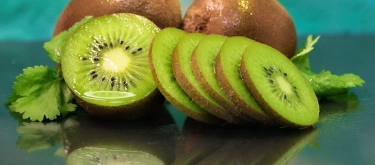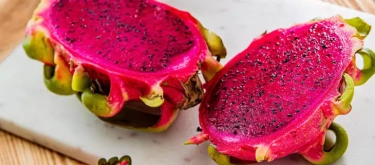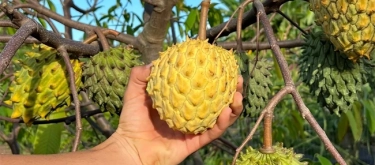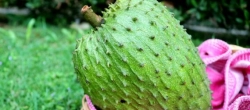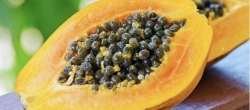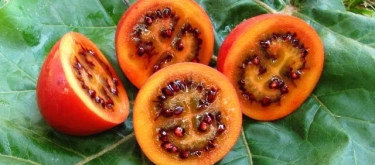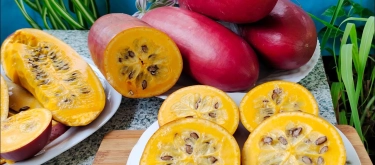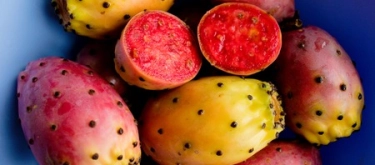Actinidia (Kiwi Fruit): Taste Profile, Aroma, Benefits and Health Risks
Actinidia, better known as kiwi, is a tropical fruit prized for its vibrant color, uniquely tangy-sweet flavor, and versatile culinary applications. Whether enjoyed raw, blended into smoothies, or incorporated into gourmet dishes, this nutrient-packed fruit offers a refreshing burst of flavor and numerous health benefits. This article provides a comprehensive sensory description of Actinidia—including its taste, aroma, texture, and appearance—followed by an in-depth flavor analysis, diverse culinary applications, selection and storage tips, nutritional insights, and key dietary considerations.
Actinidia, commonly known as kiwi fruit, is naturally vegan, gluten-free, and nutrient-dense. It’s an excellent source of vitamin C, dietary fiber, and antioxidants. However, individuals with known kiwi or latex allergies should exercise caution.
What does Actinidia (Kiwi Fruit) taste like?
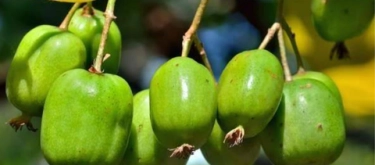
Complete Sensory Description
Taste:
Actinidia delights the palate with a dynamic interplay of flavors. At first bite, its bright tartness delivers an invigorating zing, quickly softened by a natural sweetness that echoes tropical notes of melon and citrus. This balance of tangy acidity and subtle sugary undertones creates a refreshing, complex flavor experience that evolves with every chew.
Aroma:
The aroma of Actinidia is fresh and enticing, with a fragrant bouquet reminiscent of tropical orchards. Hints of melon, pineapple, and a delicate floral nuance meld together to produce an inviting scent that perfectly complements its flavor profile.
Texture:
Actinidia is celebrated for its unique texture. The fuzzy, brown exterior gives way to a vibrant, juicy green (or sometimes golden) interior with a smooth, tender flesh. Tiny, edible black seeds add a slight crunch, contributing to an overall succulent mouthfeel that is both refreshing and satisfying.
Appearance:
Typically oval in shape, Actinidia boasts a charming, rustic look with a soft, fuzzy brown skin that contrasts strikingly with its luminous green flesh. Its visually appealing interior, dotted with tiny seeds, signals both its exotic origins and its nutritional bounty.
In-Depth Flavor Analysis
-
Tart and Tangy Start:
The initial burst of Actinidia is marked by a lively tartness that awakens the taste buds, setting a vibrant stage for the fruit’s flavors. -
Natural Sweetness:
As the tartness mellows, a gentle sweetness emerges, harmoniously balancing the acidity and evoking hints of tropical fruits such as pineapple and guava. -
Citrus and Melon Undertones:
Underlying the primary flavors are subtle notes of citrus and melon, which add depth and complexity to the overall profile, ensuring a refreshing finish that lingers pleasantly. -
Evolving Complexity:
The flavor profile is layered and evolves with each bite—from the initial tang to a soft, sweet conclusion—making Actinidia a versatile ingredient that pairs well with both savory and sweet dishes.
Culinary Applications
- Fresh Consumption:
Enjoy Actinidia on its own as a refreshing snack, or slice it into fruit salads for an added burst of color and flavor. - Smoothies & Juices:
Blend it into smoothies or juices to infuse drinks with its vibrant flavor and nutritional benefits. - Yogurt & Cereals:
Add sliced or diced Actinidia to yogurt, cereal, or oatmeal for a tropical twist to your breakfast. - Desserts & Salsas:
Use it as a topping for desserts like pavlovas or tarts, or mix into salsas for a unique contrast to spicy dishes. - Gourmet Garnish:
Its striking appearance and balanced taste make it an ideal garnish for both sweet and savory gourmet dishes.
Selection and Storage
Selecting Actinidia:
- Look for fruits with firm yet slightly yielding skin, free from blemishes or overly soft spots.
- Choose Actinidia with a vibrant, fuzzy exterior and bright, translucent interior—indicators of ripeness and high quality.
Storage Recommendations:
- Store whole Actinidia in the refrigerator’s crisper drawer at temperatures between +2°C and +4°C (36°F–39°F).
- Allow the fruit to ripen at room temperature if needed, then refrigerate to maintain its freshness.
- Once cut, consume promptly to enjoy optimal texture and flavor, or store in an airtight container for up to 2 days.
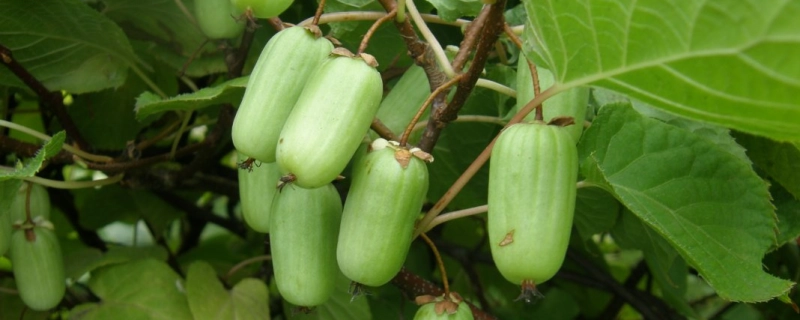
Quick Facts
- Exotic Appeal:
Actinidia, or kiwi, is celebrated for its unique fuzzy exterior and vibrant, nutrient-rich interior. - Nutrient Powerhouse:
Rich in vitamin C, dietary fiber, and antioxidants, it offers impressive health benefits. - Versatile Use:
Adaptable in a wide range of culinary applications—from fresh snacks to sophisticated desserts. - Naturally Vegan and Gluten-Free:
An ideal fruit for those following plant-based or gluten-free diets. - Low-Calorie Delight:
Despite its nutrient density, Actinidia is low in calories, making it suitable for balanced diets.
Health Benefits of Actinidia
- Immune Support:
High vitamin C content boosts the immune system and aids in skin health. - Digestive Health:
Dietary fiber promotes healthy digestion and helps regulate bowel movements. - Antioxidant Rich:
The antioxidants present protect cells from oxidative stress and support overall health. - Heart Health:
Potassium and other minerals help maintain a healthy blood pressure and support cardiovascular function. - Energy and Vitality:
Its natural sugars and vitamins provide a quick energy boost without a heavy calorie load.
Additional Nutritional Insights
- Balanced Nutrient Profile:
Actinidia offers a balanced mix of proteins, carbohydrates, and healthy fats, contributing to sustained energy. - Micronutrient Boost:
It supplies essential vitamins (such as A, C, and E) and minerals (including potassium and magnesium) that are vital for various body functions. - Low Glycemic Index:
Its impact on blood sugar levels is minimal, making it a smart choice for those managing diabetes. - Phytonutrient Rich:
Packed with antioxidants and anti-inflammatory compounds, Actinidia supports long-term health. - Minimal Processing:
Best enjoyed fresh to maximize its nutritional and sensory benefits.
How to Enjoy Actinidia
- Snack Fresh:
Simply peel and slice Actinidia for a refreshing, vitamin-packed snack. - Blend into Smoothies:
Combine with other fruits and vegetables in a blender for a delicious, nutrient-rich smoothie. - Top Your Breakfast:
Add slices to yogurt, oatmeal, or cereal for a burst of tropical flavor. - In Salads and Desserts:
Use as an ingredient in salads or as a decorative topping on cakes, tarts, and other desserts. - Creative Culinary Uses:
Experiment by incorporating Actinidia into salsas, sauces, or even savory dishes for a unique, tangy twist.
Harm and Dietary Considerations
- Allergic Reactions:
While rare, some individuals may experience allergies to kiwi; consult with a healthcare provider if you have known fruit allergies. - Moderation Recommended:
Due to its natural sugar content, enjoy Actinidia in moderation as part of a balanced diet. - Latex Allergy Warning:
People with latex allergies might also react to kiwi; exercise caution if you are sensitive. - Storage Vigilance:
Actinidia is highly perishable—consume soon after cutting or properly store leftovers to preserve quality.
Conclusion
Actinidia, commonly recognized as kiwi, offers a tropical sensory experience with its lively balance of tangy and sweet flavors, succulent texture, and striking appearance. This versatile fruit not only elevates everyday meals with its nutrient-packed profile but also lends a touch of exotic flair to gourmet creations. Enjoy its refreshing taste as part of a well-rounded diet and experience the myriad health benefits it provides.
References
- McGee, H. (2004). On Food and Cooking: The Science and Lore of the Kitchen. New York: Scribner.
- USDA. (2019). "National Nutrient Database for Standard Reference."
- Healthline. (2020). "The Nutritional Benefits of Kiwi (Actinidia deliciosa)."
